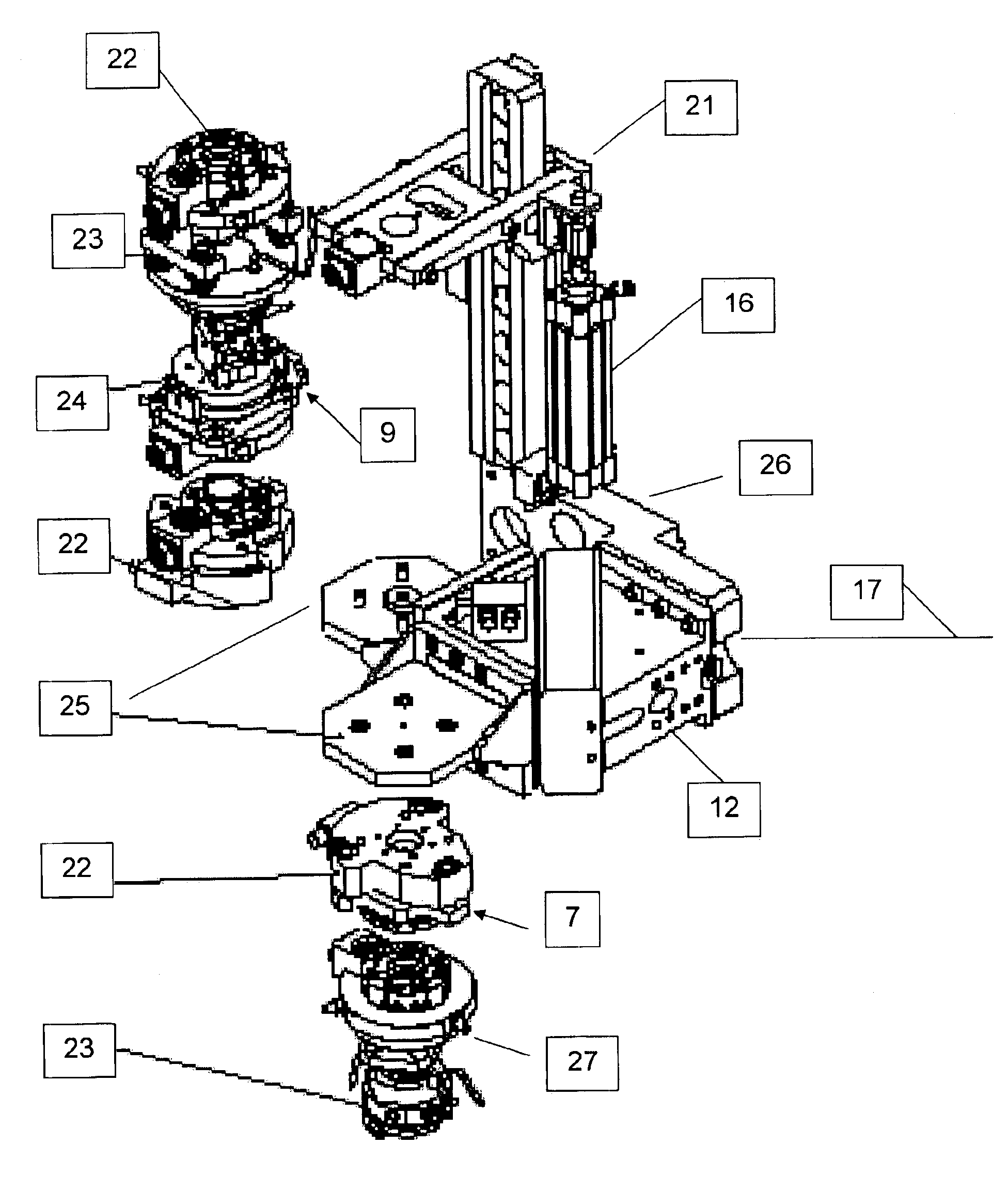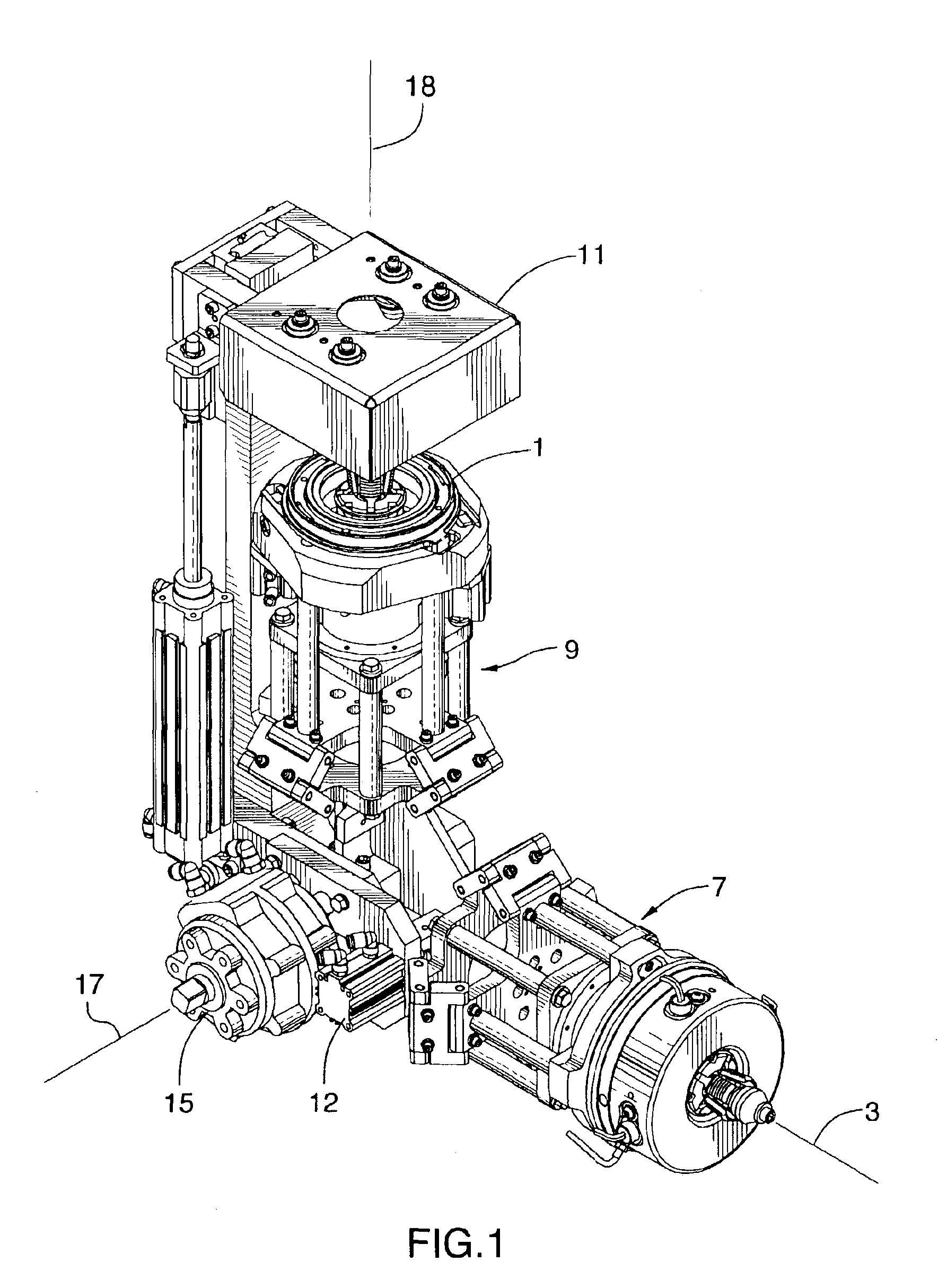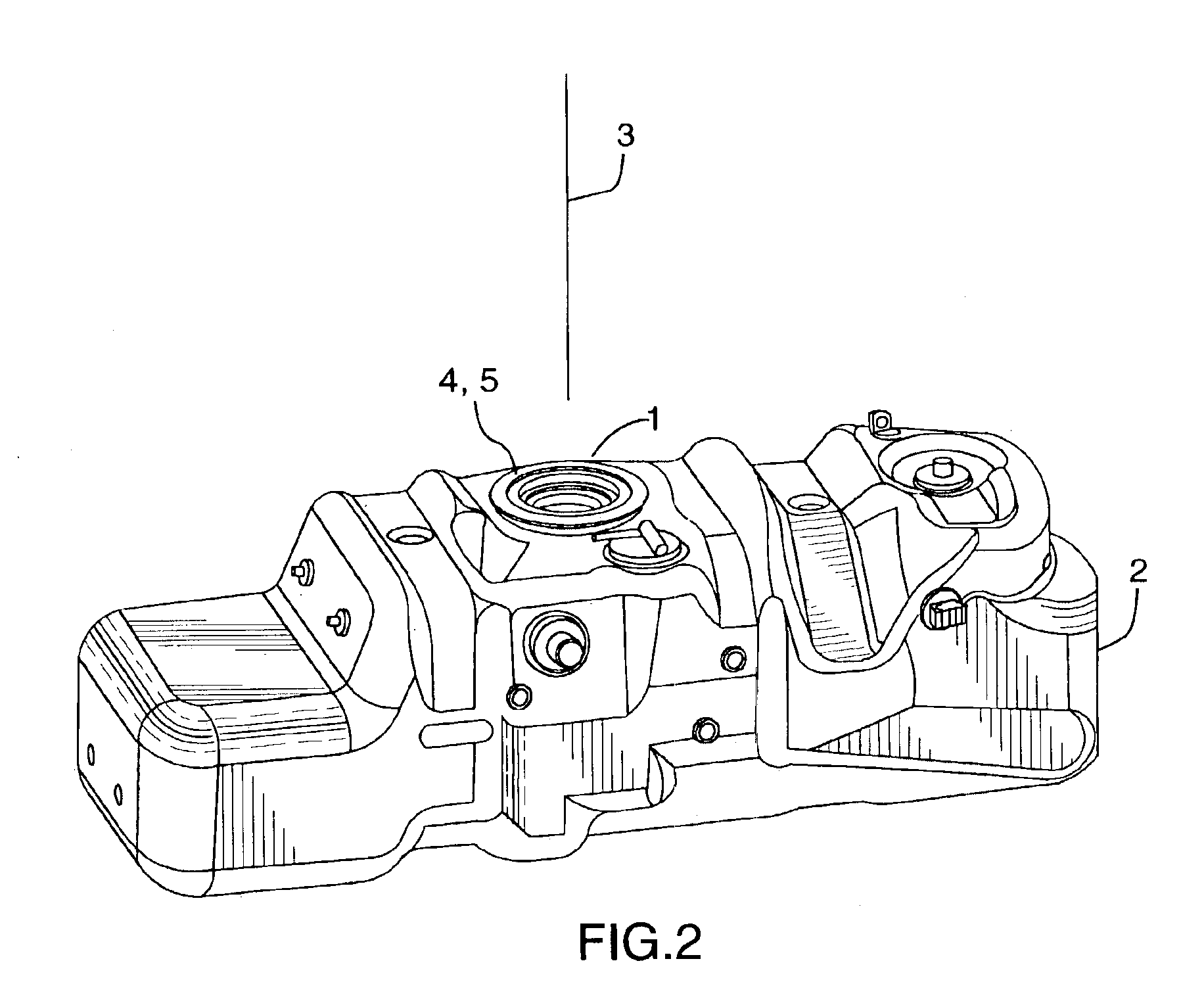Combination tool with automated tool change for robot assisted assembly
a technology of robot assisted assembly and tooling, which is applied in the direction of manufacturing tools, precision positioning equipment, transportation and packaging, etc., can solve the problems of inability to adapt to inability to meet the needs of different types of robots, etc., to achieve easy adjustment, reduce cycle time, and save time and cost
- Summary
- Abstract
- Description
- Claims
- Application Information
AI Technical Summary
Benefits of technology
Problems solved by technology
Method used
Image
Examples
Embodiment Construction
FIG. 2 shows an example workpiece 2 in the form of a blow moulded plastic gas tank which includes a fitting known as a “sender ring”. For simplicity the sender ring will be simply identified as the part 1 which is thermally plastic welded to the gas tank workpiece 2 during the operation described below. As seen in FIG. 2 however, the gas tank workpiece 2 includes a number of vents and fittings which may also be installed using the method described here.
The sender ring part 1 and the target surface 5 on the workpiece have an alignment axis that ideally should coincide exactly with the operating axis 3 of the combination tool. The alignment / operating axis 3 is used to orient and align the part 1 on the workpiece 2 and is used as a reference vector. As it is appreciated by those skilled in the art, a blow moulded plastic gas tank may have significant variation in its outer dimensions due to various causes inherent in the manufacturing process such as shrinkage of the thermal plastic ma...
PUM
| Property | Measurement | Unit |
|---|---|---|
| rotation | aaaaa | aaaaa |
| power | aaaaa | aaaaa |
| pressure | aaaaa | aaaaa |
Abstract
Description
Claims
Application Information
 Login to View More
Login to View More - R&D
- Intellectual Property
- Life Sciences
- Materials
- Tech Scout
- Unparalleled Data Quality
- Higher Quality Content
- 60% Fewer Hallucinations
Browse by: Latest US Patents, China's latest patents, Technical Efficacy Thesaurus, Application Domain, Technology Topic, Popular Technical Reports.
© 2025 PatSnap. All rights reserved.Legal|Privacy policy|Modern Slavery Act Transparency Statement|Sitemap|About US| Contact US: help@patsnap.com



